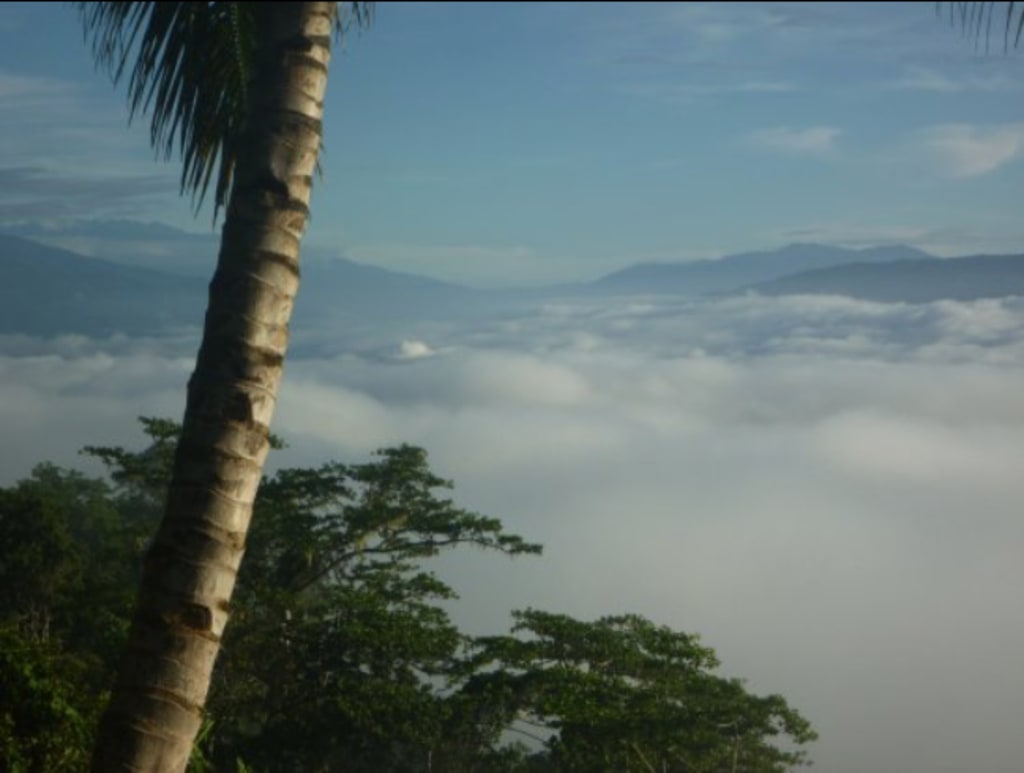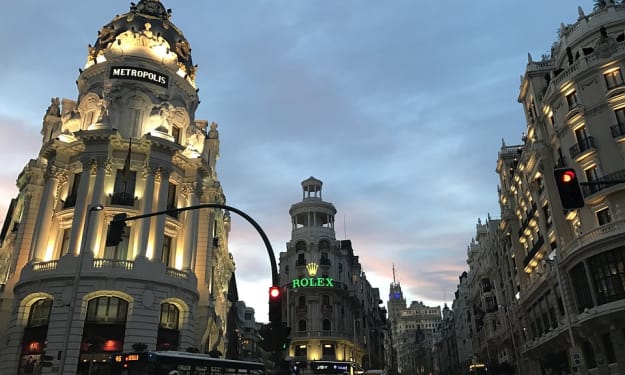Paradise: Papua New Guinea
The island of Papua New Guinea is as entrancing as it is a mirage of serenity bathed in un-spoilt ideals.

Somewhere along the South-Western part of the Pacific you may find yourself at a loss of everything you thought held dear. The island of Papua New Guinea is as entrancing as it is a mirage of serenity bathed in un-spoilt ideals, where gazing too long can thrust you into its multifaceted allure that has taken so many to the highest peaks of pure exploration—through a twist of bright encounters with traditional tribes, off-the-beaten-track adventure in wildlife-rich jungles, and adrenaline fuelled surfing meters from the pristinus of shores.
Stay close, wander too far, and the mind will not follow. Settle here, and you could see this place become home for the stranger you now see in reflection. You see, many have toyed with Papua New Guinea, only to be made whole—in a way un-wavered to the sights and sounds of anything West of the island. Here emotions are toyed with as if they were nothing but stones swept across a levee of consciousness. You may not realise it at first, but clarity will play a part in this transformation, as you make your way through the cocoon of your former self out into your new life, as someone who is one, with paradise.
“All lost souls are found here, the unsifted, the uncategorised and the marginalised. Papua New Guinea brought me true happiness that I never began to consider could be felt by our species before.” Trish Nicholson, anthropologist and author of the 2015 memoir: The Inside Crocodile: The Papua New Guinea Journals, was taken back by her own experiences on the island. “I experienced living, true living,” she explains. “There was a lot of trials and tribulations to my three year stay as a development worker in Papua New Guinea—but one thing's for sure, I could live a thousand lives over, and still continue to remember those days as if they were yesterday.”
Papua New Guinea (PNG) has gone through many transformations since its birth as a nation. The first inhabitants of the island New Guinea were Papuan, Melanesian, and Negrito tribes, who altogether spoke many different languages. The eastern half of New Guinea was first explored by Spanish and Portuguese explorers in the 16th century who sought to use the islands exports of coffee and oil for personal gain. In 1828, the Dutch formally took possession of the Western half of the island (now the province of West Papua, Indonesia). Then in 1906, Britain transferred its rights to British New Guinea to a newly independent Australia, around this time was when the name of the territory was changed to the Territory of Papua. Australian troops invaded German New Guinea (called Kaiser-Wilhelmsland) in World War I and gained control of the territory under a League of Nations mandate. New Guinea and some of Papua were invaded by Japanese forces in 1942. After being liberated by the Australians in 1945, it became a United Nations trusteeship—administered by Australia—the territories were combined and named the Territory of Papua and New Guinea.
In recent years, the island has taken a different approach—extending its hand to anyone caught in the reeling. Festivals are now a weekly, if not daily tradition; littered with colour and teeming with raw personality. Then you have the many different physical activities you may participate in both on, and off foot. Walking is PNG’s main mode of transportation. Not a detriment to your stay, as over time this has led to many avid adventurers exploring past the parameters the island originally permitted. Trekking, mountain climbing and bushwalking now take the light as the most efficient way of looking beyond the colour—introducing you to nature in all its vibrance and purity.
The legendary Kokoda Track is simply that: legendary; something of ancient folklore shared between trekkers who see only to echo its name in whisper. 96km of escalating expedition await the thousands attempting it yearly—every step introducing a new scene, as you weave further in and out of jungle terrain seamlessly, leaving nothing but patterns embedded in your wake. An average of eight days is required to complete the track depending on the amount of rests taken—whereas the natives are known to complete it within three, using nothing but trust for their homeland. “It took us 10 days to do the Kokoda,” Australian trekker Mike enthuses. “We had to rest a couple of times due to the harsh reality of the terrain and environments. I’ve never seen beauty like it, the heritage of this place is partly the reason we did this as-well. After all, the best treks are the ones with the legacies.” Presently, the appeal of the trek stems from a mix of both exploration as well as history. During WWII, the Kokoda Track was the setting for the many battles between both Japanese and Australian soldiers. With casualties on both sides, a group of Papuans took it upon themselves to guide injured Australian soldiers through the Kokoda Track in order to reach other parts of the island in search of aid. The surviving soldiers gave these Papuans the name "Fuzzy Wuzzy Angels," inspired by their matted hair and helpful nature—thousands of lives were saved thanks to the Angels; a piece of history never forgotten, thanks to the many murals that line the skirts of the trek documenting the bravery and humanity of the angels.
Freedom can come in many forms here, many in the vein of alternative adventure. Like its Pacific neighbours Australia, surfing has attracted many enthusiasts across the globe. Wet weather through monsoon season casts much bigger, stronger waves from where the main barrier reef stretches along the southern seaboard, all the way to the South side of PNG —only encouraging more in their attempt to tame the ocean. Professional surf Photographer Cameron Slade is just one of many taking to the waves. “Every surf zone in PNG is awesome,” Cameron emotes. “They all operate under a surf management system that Andrew Abel created decades ago; zero crowds, as the number of surfers is set at a level that makes sure the surfing experience is perfect for everyone but at the same time safe. Fees are paid to the local communities who are the resource owners and the whole system is transparent at every level and everyone is stoked. I reckon it’s the best place on the planet for a dip in the waves.”
Located in the Asia Pacific region’s Coral Triangle—surrounded by the Bismarck, Coral and Solomon Seas—PNG allows you to participate in a mixed bag of deep sea diving meters dotted throughout the locale, offering deep blue plunges into barrier reefs, coral walls, fringing reefs and seagrass beds. The P38 Lightning Milne Bay dive is another one of PNG’s historical landmarks open to the adventurous who seek to deepen their adventure into self-discovery. P38 Lightning is a sunken WWII fighter jet that was left undiscovered for more than 50 years after the war. It sits 27 metres/90 feet of water; engrossed in its new environment, home to many of the spiralling ocean life that sew through the rusted aircrafts remains. The seabeds of PNG are scattered with past relics from WWII and beyond; every day sparking anticipation as to what might wash up from the prised sands of history. Milne Bay is found in the South-Eastern part of the island, renown for being the pinnacle of fishing spots on the entire island, home to a mirage of tropical fish and plant life, most notably prawns and crayfish which happen to be some of PNG’s more popular exports—providing multiple revenue streams for the thousands of fishermen who yearn eagerly in pools of anticipation.
PNG is one of the last few places on earth, able to lay claim that it is un-stroked by the sullen hands of excessive tourism, mostly in part to the various tribes that still inhabit the island. Each tribe has passed down tradition for centuries; these tribes are arguably the embodiment of the very roots that line the surfaced beating heart of PNG. Many of the tribes have history dating all the way back to around 7000BC, well before any of our own lifetimes yet somehow traditionalism in their image has yet to diminish. Every tribe have their own distinctive identity, featuring an elaborate head dress design—sporting their own signature face paint and sigil. Traditions separate the tribes, however, all worship the same entity: the red flower simply known as fire. Take for example the Baining Tribe. Such a tribe celebrates male coming of age in the only way they can, by having a boy walk bare naked through flames—whilst the tribe elders chant and drum—upon emerging through the flames the boy becomes a man, akin to a phoenix of maturity. This rite of passage has existed for centuries, now extended to the many outsiders caught in sight of the flame, who join the Baining in celebration—void of bias and predilection, where one can truly be free.
More than 800 spoken languages exist in PNG—about a third of the world's indigenous tongues, "gude," pronounced "goo-day" is hello in the island’s main spoken dialect: Tok Pisin. Local guide Haksu, sees thousands filter the island daily; a life spent in paradise can leave you with a sense of daze, as well as humour. “I say so many times hello in New Guinea and they still not learn. Many no not how to respond, it always ‘gooey-dah’ or ‘jewey-duh’. Only one has said it correct first time which very rare. I hope one day I find another first time.” Haksu is but one of many inhabitants living on the many smaller islands just off the coast of PNG. The other non-inhabitable islands are used by visitors to soak in breath-taking views exclusive to kayaking. Roughly 45 minutes is needed in order to reach areas like Tufi—luckily, the views here are tranquil enough to keep commuters occupied on their journey. The cliff faces here stretch over several hundred feet high; waters sheltered from the prevailing winds—the surface almost glass-like, as you run your fingers gently through the haze. It’s moments like these that take you places far greater than you ever physically imagined. This is what PNG is: a moment in translation, where the lost is found and the found, are lost.
If you yearn for seclusion, look no further than the Highlands; an isolated series of locations, offering a kaleidoscope of vibrant feathered birds and lush vegetation of every shade green imaginable. Like its name suggests, the Highlands offer the tallest exploration points on the entire island—with Mount Victoria taking the title of highest peak at 4,038 meters (13,248 feet). It’s here in the highlands that you will discover Darwin's rarest subjects, including the worlds largest species of butterfly: The Queen Alexandra Birdwing among others, including the Dendrolagus goodfellowi: a endangered species of tree kangaroo that mitigate atop of tree branches, hiding in plain sight from those yet to see something so intriguing. Multiple birds of paradise unwillingly emote for even the slightest part of your attention across the Highlands—reminding you of the beauty around every ridge and corner, residing so close to the natives who almost live their lives in constant parallel.
Many Papuans live on the mountains scattered across the Highlands, choosing independence over streams of flat villages and consummate distractions, only adding to the mystique in the process. The Highlands play host to the famous Goroka show, opening itself to anyone and every one from across the island and beyond. The Goroka Show features over 1,000 performers from over 70 different tribes participating in a mix of different performances, originating from traditions not lost in the barrows of time. Songs or ‘singsings’ are the festivals main pull, stemming from the ancient traditions of the tribesmen living remotely within the clouds. The Goroka show is the oldest, most prestigious festival in PNG, taking its rightful place as the headline event to close the nation's independence day celebrations every September. “We are very big on celebration here,” one Huli Wigman tribesman explains. “I do not know if other places do this, but we like to think so in many way. This is how we feel life, in the light of the sun with ourfamily. We are all earths' children, and all is welcome in the light.”
PNG’s lack of modern infrastructure, tangled in lush green-carpeted peaks that descend to idyllic remote beaches, tantalise travellers who seek more in their plight of exotic discovery. The intriguing cultures that remain here, rival the astounding natural environments in un-paralleled ceremonious harmony unlike anything ever experienced before.
All that’s missing... is you.






Comments
There are no comments for this story
Be the first to respond and start the conversation.